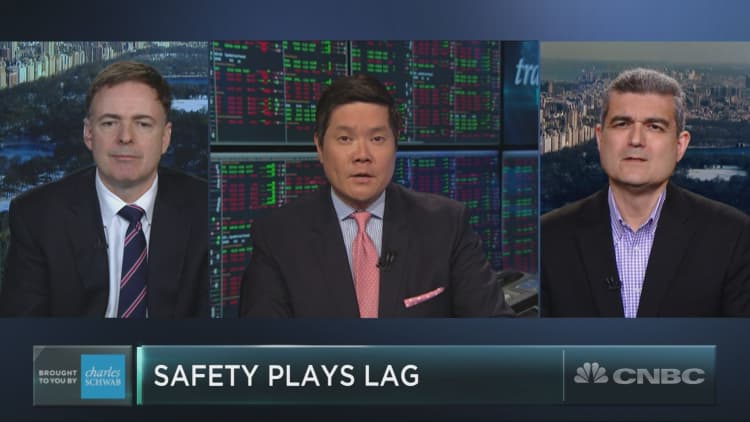
A more aggressive Federal Reserve this year could pull the reins on U.S. economic growth and turn the lights up on the utilities trade.
"We have a unique opportunity here," Larry McDonald, editor of the Bear Traps Report, told CNBC's "Trading Nation" on Wednesday.
The sudden passage of tax reform late last year raised the prospects of stronger economic growth and dealt a stinging blow to the bond market and safe-haven sectors, including utilities. Faster expected growth for the U.S. sent bond prices lower and yields higher with the 10-year Treasury note hitting a peak of 2.94 percent in February, its highest level in four years.
But, with higher economic projections, the chances of faster interest rate hikes from the Fed have increased, which would then slow down the pace of growth in the economy. Such a swing could put utilities back in favor, says McDonald.
"Utilities, the XLU, are a buy here because you're going to have a little bit of a mean reversion in the economic data. This move up in rates is going to do some damage to the economy short term," he said.
The Fed's first rate hike of the year, and first under new Fed chair Jerome Powell, is expected to come when the Federal Open Market Committee meets on March 20 and 21. The probability of a 25-basis-point increase in the fed funds rate currently sits at 86 percent, according to CME Group futures. Chances are also high for another rate hike in June and September.
McDonald predicts a potential 10 to 15 percent pop in utilities. The utilities sector has been the second-worst performer in the year to date, beat only by energy. The sector has dropped 7 percent in 2018 so far, trailing the S&P 500's 2 percent increase.
Boris Schlossberg, managing director of FX Strategy at BK Asset Management, is less confident of any safe-haven space right now. Utilities, for example, are beset by swings in interest rates, while consumer staples are less of a certainty as Amazon casts a longer shadow over retail.
"It's really hard to find a true defensive play now," Schlossberg told "Trading Nation" on Wednesday. "If you think the market is going to correct, everything is going to go down with it."
Instead, Schlossberg has an alternative way to seek out potential outperformers in the market — low price-to-sales ratios. He says stocks with a low ratio have largely outperformed the S&P 500 in every decade since the 1950s, except during the bull run of the 1990s.
"If you're going to look for value that's probably the way I would start — companies that are selling cheap at this point," he added.
The S&P 500 has a price-to-sales ratio of 2 times forward sales. The information technology sector has the highest ratio at 4.4 times forward sales and the consumer staples sector the lowest at 1.2 times.





